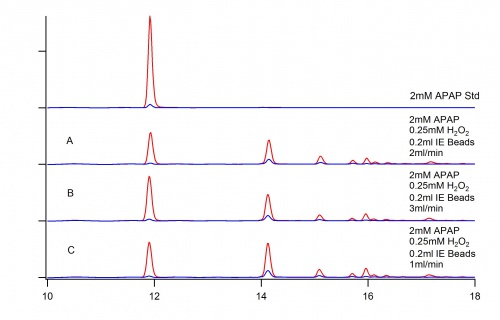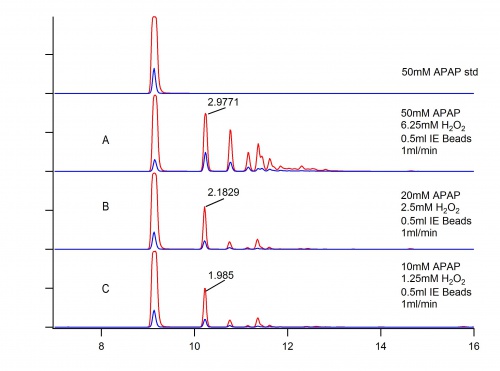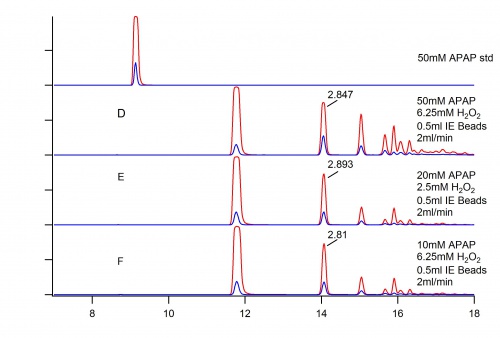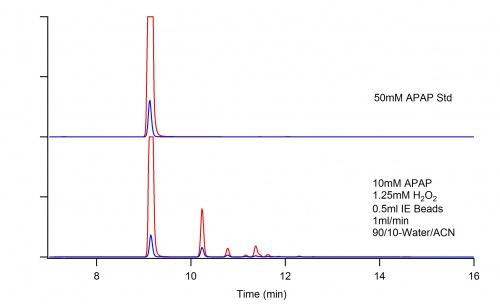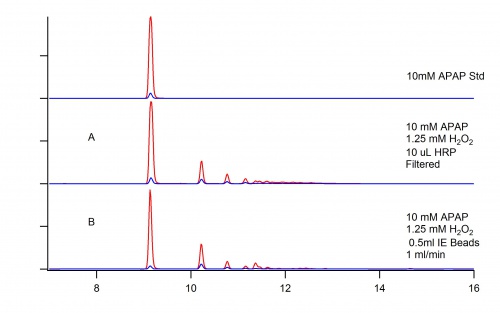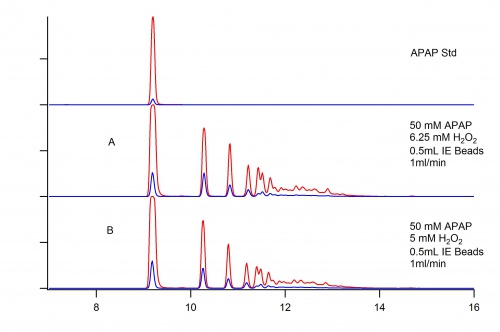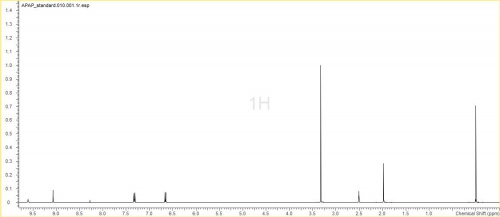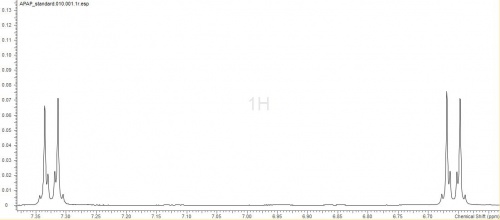Difference between revisions of "Ian Salveson: Research Log"
Ian Salveson (talk | contribs) |
Ian Salveson (talk | contribs) |
||
| (15 intermediate revisions by the same user not shown) | |||
| Line 41: | Line 41: | ||
Prepared Vial 2 for flash. | Prepared Vial 2 for flash. | ||
| − | [[Vial 3 Prep 062316.jpg|500px]] | + | [[File:Vial 3 Prep 062316.jpg|500px]] |
| + | |||
| + | |||
| + | ==June 27, 2016== | ||
| + | |||
| + | Compared filtered reaction solution with dioxane solution. | ||
| + | |||
| + | [[File:APAP_062716.jpg|500px]] | ||
| + | |||
| + | ==June 28, 2016== | ||
| + | |||
| + | Investigated the effects of introducing the peroxide through a drip into a stirred reaction mixture. | ||
| + | |||
| + | [[File:Beaker Drip.jpg|500px]] | ||
| + | |||
| + | ==June 29, 2016== | ||
| + | |||
| + | Flash Fractions | ||
| + | |||
| + | [[File:Flash 063016.jpg|500px]] | ||
| + | |||
| + | ==July 5, 2016== | ||
| + | |||
| + | Flash Fractions | ||
| + | |||
| + | [[File:Flash 070516.jpg|500px]] | ||
| + | |||
| + | Beaker Experiment | ||
| + | |||
| + | [[File:Beaker Exp 070516.jpg|500px]] | ||
| + | |||
| + | ==July 6, 2016== | ||
| + | |||
| + | Flash Prep | ||
| + | |||
| + | [[File:Flash_Prep_070716.jpg|500px]] | ||
| + | |||
| + | ==July 12, 2016== | ||
| + | |||
| + | [[File:APAP Stdnmr.JPG|500px]] | ||
| + | |||
| + | [[File:APAP Std AromaticNMR.JPG|500px]] | ||
| + | |||
| + | [[File:APAP 1NMR.JPG|500px]] | ||
| + | |||
| + | ==February 6, 2017== | ||
| + | |||
| + | Refill 3L of HPLC 0.1%TFA. Check efficacy of recorded APAP oxidation HPLC method. Collect data showing the HPLC signature of the polymeric precipitate. Immobilized HRP. | ||
Latest revision as of 01:39, 7 February 2017
June 15, 2016
Determine the effect of flow rate on product formation. Figure 1 below shows similar reactions with differing flow rates.
This figure shows flow rate has a small effect on product formation. This experiment was done at 2 additional concentrations with similar results.
June 16, 2016
Concentration of acetaminophen is increased in preparation for Flash Chromatography. Figure 1 below shows the effect of increasing concentration on product formation.
It appears that at higher concentrations, the reaction will begin to form polymeric material, despite relatively low concentrations of Hydrogen Peroxide.
Sample B will be separated using Flash Chromatography.
It is important to note that we have reached the max absorbance of our instrument.
Figure 2 below shows a set of samples under identical conditions as Figure 1 except with a flow rate of 2 ml/min.
The chromatography on this figure is faulty, specifically the changing retention time. The results also contradict what may have been expected of a faster flow rate. These samples should be run again if the data is deemed significant.
June 20, 2016
Sample C from June 16th was Lyophilized and reconstituted in a solution of 90% water and 10% ACN. This solution was filtered and analyzed once more using the HPLC see if any product was lost.
June 22, 2016
Peformed flash Chromotography on the prepped APAP sample from 6/20. Was able to collect a nonstandard peak. Below is a chromatogram of the complete mixture shown with the peak collected through flash.
There appear to be two impurities which are unaccounted for in the complete mixture.
June 23, 2016
Prepared Vial 2 for flash.
June 27, 2016
Compared filtered reaction solution with dioxane solution.
June 28, 2016
Investigated the effects of introducing the peroxide through a drip into a stirred reaction mixture.
June 29, 2016
Flash Fractions
July 5, 2016
Flash Fractions
Beaker Experiment
July 6, 2016
Flash Prep
July 12, 2016
February 6, 2017
Refill 3L of HPLC 0.1%TFA. Check efficacy of recorded APAP oxidation HPLC method. Collect data showing the HPLC signature of the polymeric precipitate. Immobilized HRP.
